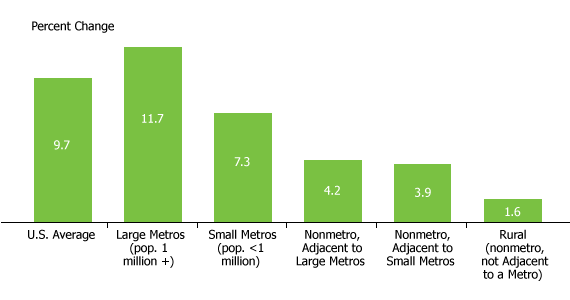Paola Scommegna
Contributing Senior Writer

January 7, 2012
Contributing Senior Writer
Appalachia’s residents remain older, less educated, and less racially diverse than the United States as a whole, but those population trends vary widely by county, according to the The Appalachian Region in 2010: A Census Data Overview, prepared by the Population Reference Bureau for the Appalachian Regional Comission. (The report analyzed 2010 Census and 2005-2009 American Community Survey data.)
The Appalachian region encompasses 205,000 square miles along the spine of the Appalachian Mountains from southern New York to northern Mississippi, including portions of 12 states and all of West Virginia. The Appalachian Region in 2010: A Census Data Overview finds that this region’s population grew 7 percent between 2000 and 2010, slightly lower than the nearly 10 percent U.S. growth rate for the decade. In every Appalachian state except Alabama and Georgia, the part of the state outside the Appalachian region grew at a faster rate, noted Linda A. Jacobsen, report co-author and vice president of Domestic Programs at PRB.
One-third of the region’s 420 counties lost population during the decade—mostly in the northern and central counties, as well as in parts of Alabama and Mississippi. But nearly one in four Appalachian counties grew at or above the national average. Most of the fastest-growing counties were in southern and south-central Appalachia, although some counties in Kentucky, Pennsylvania, and West Virginia also grew rapidly.
While the proportion of Appalachian residents ages 18 to 24 roughly equals the national average (10 percent), in 122 counties this age group makes up less than 7.5 percent of the population. Most of these counties lie outside metropolitan areas. “The small share of young adults in some counties suggests that these areas may lack economic and educational opportunities for youth making the transition to adulthood,” explained Kelvin Pollard, report co-author and PRB senior demographer.
Population Change by Appalachian County Type, 2000-2010

Source: Appalachian Regional Commission and the Population Reference Bureau, 2011.
Other key findings:
The full report includes detailed tables and county-level maps.
Paola Scommegna is a senior writer/editor at the Population Reference Bureau.
